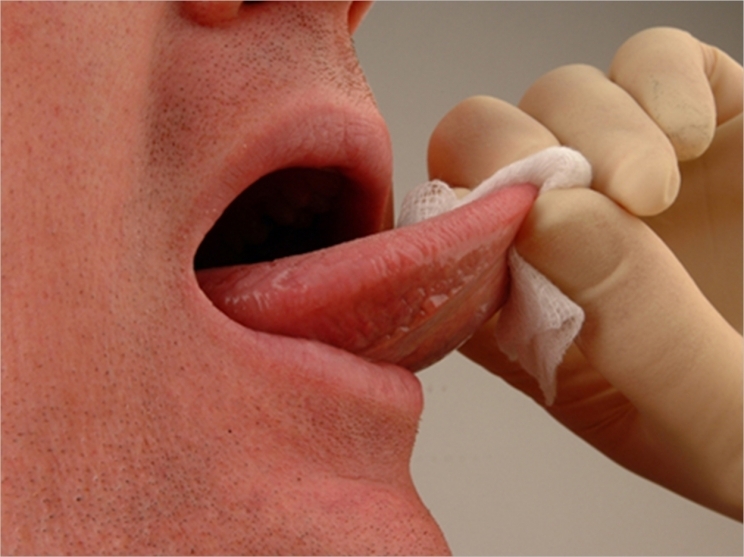
Someone dies of oral or oropharyngeal cancer every hour, according to a coalition of oral health organizations marking April as Oral Cancer Awareness Month. Also, about 51,550 new cases will be diagnosed in the United States this year, though 40% of those patients won’t survive longer than five years, and those who do will suffer facial disfigurement or difficulties with eating and drinking.
These groups attribute oral cancer’s high death rate to its typically late discovery, with many patients not diagnosed until they are in stage 3 or 4. However, the groups note that when oral cancer is detected and treated early, treatment-related health problems are reduced, and survival rates may increase. They also say that regular oral cancer examinations performed by an oral health professional are the best method for early detection.
To foster early detection, the Oral Cancer Foundation’s Check Your Mouth initiative encourages the public to regularly check themselves for the signs and symptoms of oral cancer between dental visits and to see a dental professional if these indications do not improve or disappear after two or three weeks.
Signs and symptoms of oral cancer caused by tobacco usage or excessive alcohol consumption may include:
- Any sore or ulceration that doesn’t heal in 14 days
- A red, white, or black discoloration of the soft tissues of the mouth
- Any abnormality that bleeds easily when touched
- A lump or hard spot in the tissue, usually border of the tongue
- Tissue raised above that which surrounds it; a growth
- A sore under a denture that does not heal even after the denture is adjusted
- A lump or thickening that develops in the mouth
- A painless, firm, fixated lump felt on the outside of the neck that has been there for at least two weeks
Signs and symptoms of oropharyngeal cancer caused by the human papillomavirus (HPV) persist longer than two or three weeks and may include:
- Hoarseness or sore throat that does not resolve
- A painless, firm, fixated lump on the outside of the neck that has been there for at least two weeks
- Constant coughing that does not resolve
- Difficulty swallowing; a sensation that food is getting caught in the throat
- An earache on one side (unilateral) that persists for more than a few days
All these symptoms, for oral cancer related to alcohol or tobacco and for oral cancer caused by HPV, have the commonality of being persistent and not resolving. The organizations encourage patients to call a dentist right away if they have any immediate concerns.
Also, the groups note factors that may contribute to the development of oral and oropharyngeal cancers. Historically, those at an especially high risk of developing oral cancer have been heavy drinkers and smokers older than 50. But today, the cancer also is occurring more frequently in younger, nonsmoking individuals due to HPV-16, the virus most commonly associated with cervical cancer.
HPV-16 also is related to the increasing incidence of oropharyngeal cancer, most commonly occurring in the tonsils or the base of the tongue. About 99% of people who develop an HPV oral infection will clear the virus on their own. In about 1% of individuals, the immune system will not clear the virus, and it can lay dormant for decades before potentially causing a cancer. This occurs mostly in a nonsmoking population comprising men four to one over women.
The organizations encourage patients to schedule an oral cancer examination this month and ask that this exam be made a routine part of all future dental checkups. The Oral Cancer Foundation also is providing a list of local dental professionals who are providing free oral cancer screenings this month. Additional Oral Cancer Awareness Month sponsors include:
- The Academy of General Dentistry
- The American Academy of Oral and Maxillofacial Pathology
- The American Academy of Oral Medicine
- The American Academy of Periodontology
- The American Association of Oral and Maxillofacial Surgeons
- The American Dental Hygienists’ Association
Related Articles
HPV-16 Drastically Increases Oral Cancer Risk
When an Oral Cancer Diagnosis Hits Home
Save Lives With Simple Oral Cancer Screenings











